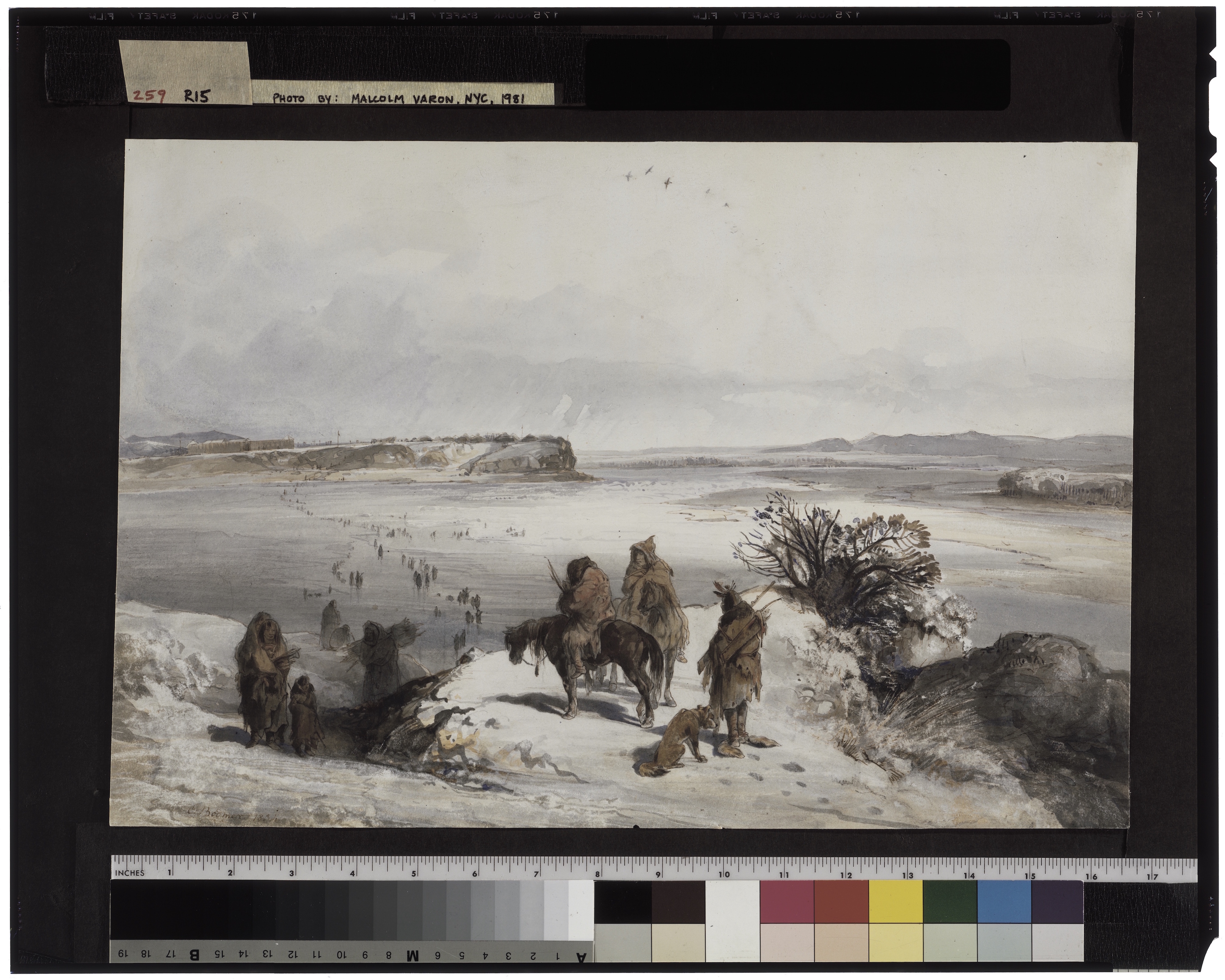Mih-Tutta-Hang-Kusch, Mandan Village

Description
At that time the Mandans, partially in response to the pressures of raiding neighbors such as the Sioux, had consolidated their people into two villages: Mih-Tutta-Hang-Kusch and Ruhptare. Mih-Tutta-Hang-Kusch, the southernmost and largest of these, can be seen in the distance across the Missouri in this landscape, as can the stockade of the recently erected Fort Clark. Each Mandan and Hidatsa settlement maintained both a summer and a winter village. This is the summer village of Mih-Tutta-Hang Kusch. Summer villages were located high on the banks of the river, out of the flood plain and in an easily defended position. Winter villages were built nearby in heavily timbered bottom land where they were protected from bitter winter winds. They were occupied during the time that the river was frozen, from roughly the end of November until February or March. Even then there was constant traffic between the two villages, as is shown in this scene by the figures carrying guns or firewood across the ice and up the trails on the bluffs. This view was reproduced as Tableau I 5 in the aquatint atlas.
Medium
watercolor on paper
Dimensions
11 1/4 x 16 5/8
Call No.
JAM.1986.49.382
Approximate Date of Creation
1834


